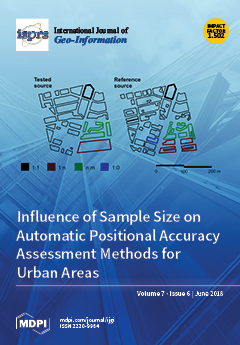The confusion matrix is the standard way to report on the thematic accuracy of geographic data (spatial databases, topographic maps, thematic maps, classified images, remote sensing products, etc.). Two widely adopted indices for the assessment of thematic quality are derived from the confusion
[...] Read more.
The confusion matrix is the standard way to report on the thematic accuracy of geographic data (spatial databases, topographic maps, thematic maps, classified images, remote sensing products, etc.). Two widely adopted indices for the assessment of thematic quality are derived from the confusion matrix. They are overall accuracy (
OA) and the Kappa coefficient (
ĸ), which have received some criticism from some authors. Both can be used to test the similarity of two independent classifications by means of a simple statistical hypothesis test, which is the usual practice. Nevertheless, this is not recommended, because different combinations of cell values in the matrix can obtain the same value of
OA or
ĸ, due to the aggregation of data needed to compute these indices. Thus, not rejecting a test for equality between two index values does not necessarily mean that the two matrices are similar. Therefore, we present a new statistical tool to evaluate the similarity between two confusion matrices. It takes into account that the number of sample units correctly and incorrectly classified can be modeled by means of a multinomial distribution. Thus, it uses the individual cell values in the matrices and not aggregated information, such as the
OA or
ĸ values. For this purpose, it is considered a test function based on the discrete squared Hellinger distance, which is a measure of similarity between probability distributions. Given that the asymptotic approximation of the null distribution of the test statistic is rather poor for small and moderate sample sizes, we used a bootstrap estimator. To explore how the
p-value evolves, we applied the proposed method over several predefined matrices which are perturbed in a specified range. Finally, a complete numerical example of the comparison of two matrices is presented.
Full article





